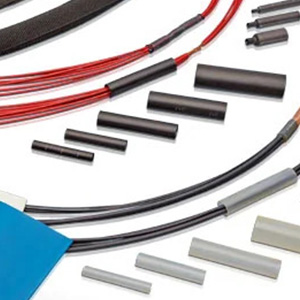 When it comes to automotive repairs and customizations, professionals and DIY enthusiasts alike need durable, cost-effective solutions for wiring and electrical applications. One of the most popular and versatile products for these tasks is heat shrink tubing. Whether you are repairing wires, protecting cables from environmental damage, or bundling and organizing wires, heat shrink is an essential tool. In this article, we’ll explore the various automotive uses for heat shrink and why it’s such a valuable asset in vehicle maintenance and modification.
When it comes to automotive repairs and customizations, professionals and DIY enthusiasts alike need durable, cost-effective solutions for wiring and electrical applications. One of the most popular and versatile products for these tasks is heat shrink tubing. Whether you are repairing wires, protecting cables from environmental damage, or bundling and organizing wires, heat shrink is an essential tool. In this article, we’ll explore the various automotive uses for heat shrink and why it’s such a valuable asset in vehicle maintenance and modification.
Common Automotive Applications for Heat Shrink
Wire Insulation and Protection
One of the primary uses for heat shrink in automotive settings is protecting electrical wiring. Cars contain many critical electrical systems, and the wires must be properly insulated to prevent damage. Heat shrink tubing acts as a protective layer, shielding wires from moisture, dust, chemicals, and even vibrations that could lead to wear and tear.
Wire and Cable Repair
Electrical wires in vehicles are subject to fraying and damage over time, which can lead to dangerous short circuits or electrical malfunctions. Heat shrink tubing is an ideal solution for repairing damaged wires. After stripping and splicing the wire, the heat shrink is placed over the repair site and heated to form a tight, secure cover that insulates the wire.
Sealing and Waterproofing Connections
Automotive electrical systems are often exposed to water and other elements, especially in off-road or harsh driving conditions. Heat shrink with adhesive lining offers an additional layer of protection by sealing electrical connections, preventing moisture from getting in. This type of heat shrink is commonly used to create waterproof seals around wire connectors, ensuring long-term reliability in wet environments.
Wire Bundling and Organization
Managing the wiring in a car can be challenging, especially when dealing with complex electrical systems. Heat shrink tubing is an effective way to bundle multiple wires together, creating a cleaner, more organized look. It also helps prevent wires from tangling or becoming damaged due to friction.
Strain Relief for Connectors
Over time, the vibrations and movements that occur in a vehicle can cause stress on electrical connections, leading to breaks or malfunctions. Heat shrink tubing is often used to provide strain relief at the point where wires connect to components, such as sensors, switches, or plugs. By reinforcing the connection, heat shrink helps ensure longevity and reliability.
Labeling and Identification
In automotive repair and custom builds, it’s important to easily identify various wires and cables. Heat shrink tubing comes in different colors and can be used to label and categorize wires, making future repairs and modifications easier. Additionally, some heat shrink tubing can be printed on, allowing for even more specific labeling.
Benefits of Using Heat Shrink in Automotive Applications
- Durability: Heat shrink tubing is highly resistant to environmental factors like water, heat, chemicals, and abrasion.
- Safety: Properly insulated and protected wires reduce the risk of electrical malfunctions and improve overall vehicle safety.
- Cost-Effective: Heat shrink is an affordable solution for insulating and repairing wires, saving money on more expensive electrical repairs.
- Professional Appearance: Using heat shrink gives your wiring a neat, organized, and professional look, which is essential for custom car builds.
Conclusion
Heat shrink tubing is a versatile and reliable tool for any automotive project, offering protection, insulation, and organization for electrical wiring. From waterproofing connections to providing strain relief and wire repair, heat shrink is a valuable asset for both professional mechanics and DIY enthusiasts. Investing in high-quality heat shrink will help ensure the longevity and safety of your vehicle’s electrical systems.

